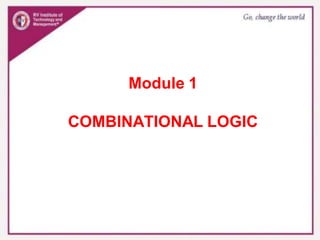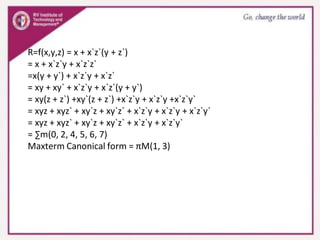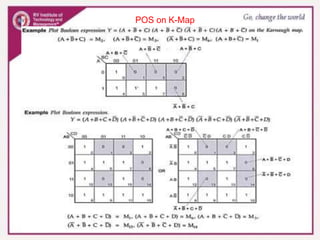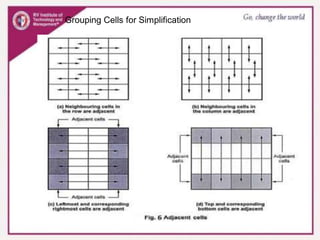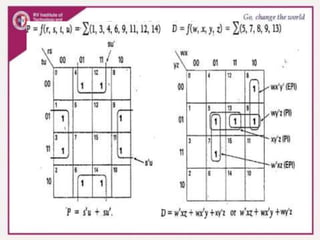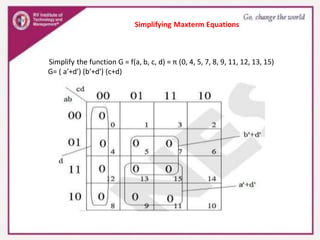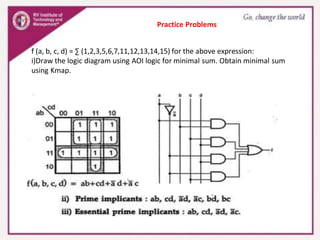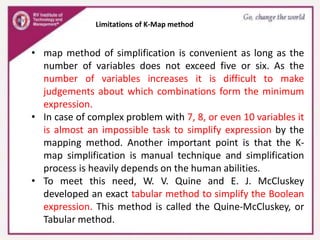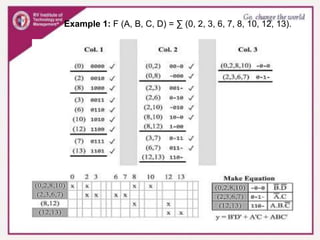This document provides information on combinational logic circuits and summarizes steps for analyzing combinational logic problems using truth tables and Karnaugh maps. It begins by defining combinational circuits as those whose outputs solely depend on current inputs, as opposed to sequential circuits which use memory elements. It then provides examples of writing truth tables and deriving Boolean expressions from problem statements. The document also covers standard forms of sum of products and product of sums, and methods for simplifying expressions using Karnaugh maps including grouping cells and rules for grouping.
